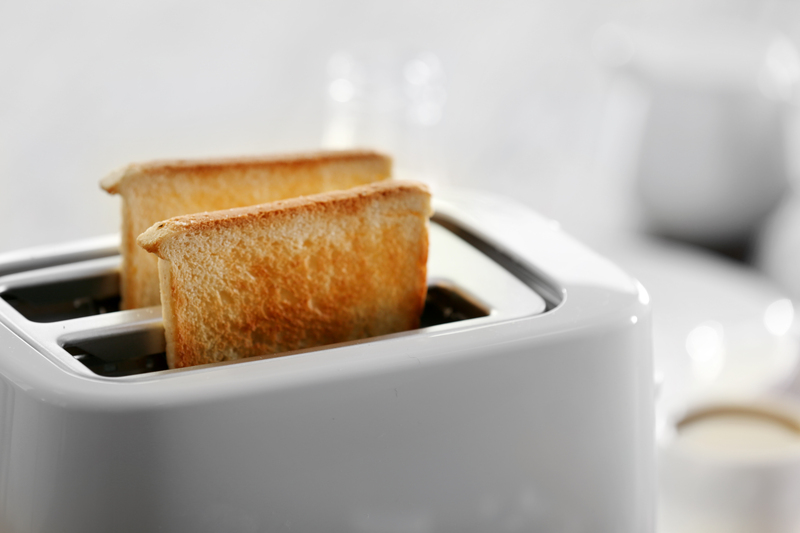Efficiently Clean Mould from Your Window Sills Today
Posted on 04/10/2025
Efficiently Clean Mould from Your Window Sills Today
Are you struggling with unsightly mould creeping up on your window sills? Looking for practical, easy-to-follow solutions that really work? You're not alone. Mould growth on window sills is a common issue in homes and workplaces, often caused by condensation, moisture, and lack of ventilation. This comprehensive guide will show you how to efficiently clean mould from your window sills today, prevent future recurrence, and create a healthier, fresher living space.
Why is Mould Growth on Window Sills a Problem?
Mould on window sills isn't just an eyesore. It can cause damage to your property and pose serious health risks, especially to those with allergies, asthma, or weakened immune systems. Early intervention is crucial to stop mould from spreading and to maintain a clean, safe environment.
- Health risks: Mould releases spores into the air, which can cause respiratory issues, headaches, allergic reactions, and worsen asthma.
- Property damage: Mould eats away at wood, paint, and sealant, leading to warped window frames and costly repairs.
- Unpleasant odours: Mould often carries a musty smell that can be difficult to eliminate.
- Reduced home value: Persistent mould problems can impact the value of your home if left untreated.

How Does Mould Develop on Window Sills?
Mould thrives in damp, poorly ventilated areas. Window sills are particularly vulnerable, especially during colder months when condensation forms on glass and seeps into crevices. Key contributors include:
- High humidity levels -- such as from bathrooms and kitchens.
- Inadequate insulation around windows.
- Leaks and condensation buildup.
- Lack of regular cleaning and maintenance.
- Potted plants placed on window sills (can trap moisture).
Understanding the causes helps you target the root of the issue, not just the symptoms.
Quick Assessment: Do You Have Mould or Dirt?
Before following mould cleaning steps, make sure what you see is actually mould. Dirt and dust can look similar but won't have the same health implications. Mould often appears as black, green, or grey patches with a fuzzy or slimy texture. Check also for a musty odour, which is a common sign of mould spores.
Efficient Methods to Clean Mould from Window Sills
What You'll Need
- Rubber gloves
- Protective mask (preferably an N95 or similar)
- Safety goggles
- Microfibre cloths or paper towels
- Soft-bristled brush or old toothbrush
- Spray bottles
- White vinegar, baking soda, or mould remover solution
- Bucket (for rinsing)
- Warm water
- (Optional) Hydrogen peroxide, tea tree oil, or essential oil blends
Safety first: Always wear protective gloves and a mask when dealing with mould, especially if you have respiratory sensitivities. Ensure the space is well-ventilated by opening windows and doors.
Step-by-Step Guide: How to Efficiently Clean Window Sill Mould
- Prepare the Area. Remove any objects (potted plants, blinds, curtains) from the window sill. Lay down old towels or sheets to catch any drips or debris.
- Dry-Wipe the Surface. Using a dry microfibre cloth, gently wipe any loose dirt, dust, or mould spores off the sill. Dispose of the cloth immediately in a sealed plastic bag.
-
Apply Cleaning Solution. Choose your cleaning agent:
- Vinegar Solution: Fill a spray bottle with white vinegar (undiluted). Vinegar is a natural antifungal and effective against many mould species.
- Baking Soda Paste: Mix baking soda with a small amount of water to form a paste. This is good for scrubbing without damaging surfaces.
- Commercial Mould Remover: For tough mould, use a store-bought solution following instructions.
- Hydrogen Peroxide (3%): Spray undiluted onto the mould, let it sit, then wipe clean.
- Scrub the Mould. Gently scrub the affected area with a soft-bristled brush or old toothbrush. Don't use a wire brush; it can damage paint or wood.
- Let the Solution Sit. After scrubbing, allow the solution to work for 10-30 minutes, as this kills underlying mould spores.
- Wipe and Rinse. Wipe the surface clean with a damp cloth. Repeat as necessary until all visible mould is gone.
- Dry Thoroughly. Moisture feeds mould, so dry the sill completely with a clean, dry towel. Use a hairdryer on a low setting for hard-to-reach corners if needed.
- Dispose of Cleaning Materials. Safely discard used cloths, brushes, or paper towels. Wash your hands thoroughly after cleaning.
If the infestation is extensive, covering large areas, or persists despite cleaning, it's best to consult a professional mould remediation service.
Natural Alternatives for Mould Removal
Prefer eco-friendly solutions? There are several natural remedies for cleaning mould off window sills that are effective and non-toxic:
- White Vinegar: Kills up to 82% of mould species. Spray and leave for at least an hour before wiping.
- Tea Tree Oil: Add 1 teaspoon to 1 cup of water, spray, and don't rinse. Its antifungal properties keep mould at bay.
- Baking Soda: Mix a tablespoon with two cups of water and spray onto the mouldy area, scrub, then wipe dry.
- Hydrogen Peroxide: Non-toxic and powerful at killing mould. Spray 3% solution on mould, leave for 15 minutes, then wipe clean.
Note: Never mix vinegar and hydrogen peroxide, as this combination can create harmful fumes.
How to Prevent Mould Returning to Your Window Sills
After you've efficiently cleaned the mould off your window sills, take these proactive steps to stop it coming back!
- Improve ventilation: Open windows regularly. Use extractor fans in kitchens and bathrooms.
- Reduce humidity: Use a dehumidifier in damp areas, especially in winter.
- Wipe condensation: Dry off window frames and sills each morning if moisture collects overnight.
- Insulate windows: Double glazing or draught-proofing reduces condensation.
- Move plants: Avoid placing potted plants directly on the windowsill.
- Fix leaks: Ensure there are no leaks around windows, and repair damaged seals or caulking.
- Regular cleaning: Clean your window sills weekly with a mild solution of vinegar and water.
Using Anti-Mould Paint and Sealants
For extra protection, consider applying anti-mould paint or sealant to your sills after cleaning. These products contain fungicides that create a barrier against future growth. Always follow manufacturer instructions for best results.
FAQs: Cleaning Mould from Window Sills
Q1. Can I use bleach to remove mould from my window sills?
While bleach will kill surface mould and whiten stains, it's not always the best choice for porous surfaces like wood. It doesn't penetrate deeply and may even encourage future mould by creating a moist environment. Vinegar or commercial mould removers are generally safer and more effective.
Q2. What if there is mould inside the window frame or between panes?
This indicates a deeper moisture issue, such as a failed window seal or internal condensation. Professional assessment and repairs are recommended to prevent further structural damage and persistent mould problems.
Q3. How often should I clean my window sills to prevent mould?
Wipe them down weekly, or more often during periods of high humidity or after heavy rain. This will help break the mould growth cycle and maintain a sanitary environment.
Q4. Are there health risks to cleaning mould myself?
Small areas of mould can be cleaned safely if you use gloves, a mask, and proper ventilation. If you have a compromised immune system, severe allergies, or the area is larger than 1 square metre, call a professional.
When to Call a Professional Mould Remediation Service
- Persistent or large mould infestations (larger than a single window sill)
- Repeated mould return despite cleaning and preventive measures
- Suspicion of hidden mould growth inside walls or inaccessible frames
- Exposure symptoms (headaches, severe allergies, or breathing difficulties) after attempted mould removal
Professional remediation specialists have the right equipment, protective gear, and expertise to address mould thoroughly and safely.

Key Takeaways: How to Efficiently Clean Mould from Window Sills
- Act quickly: Tackle mould as soon as you notice it.
- Protect yourself: Always clean mould with gloves, masks, and eye protection.
- Use effective solutions: White vinegar, baking soda, hydrogen peroxide, or commercial products work best.
- Dry thoroughly: Remove all moisture after cleaning to prevent a relapse.
- Prevention is key: Manage humidity, improve ventilation, and keep an eye on condensation.
Final Thoughts: Enjoy Clean, Mould-Free Window Sills
Efficiently cleaning mould from your window sills not only keeps your home looking neat but also protects your health and property value. With the comprehensive tips and strategies in this guide, you can tackle mould fast and keep it from coming back. Make mould prevention part of your cleaning routine, and your window sills will stay fresh, healthy, and beautiful all year long.
If you found this article helpful, share it with others and bookmark it for quick reference. Efficiently clean mould from your window sills today -- for a cleaner, healthier home tomorrow!





